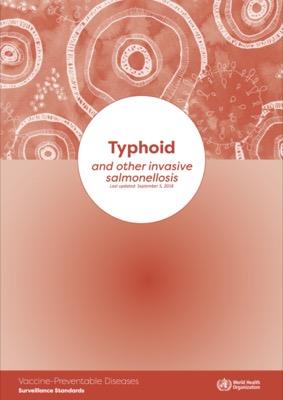Typhoid: Vaccine Preventable Diseases Surveillance Standards

Overview
Enteric fever (typhoid and paratyphoid fever) is caused
by Salmonella enterica serovar Typhi (S. Typhi) and
Salmonella enterica serovar Paratyphi (S. Paratyphi). S.
Paratyphi A and B (and, uncommonly, S. Paratyphi
C) cause a disease that is clinically indistinguishable
from typhoid fever, particularly in parts of Asia.
Invasive non-typhoidal1
salmonellosis (iNTS) is an
invasive infection caused by non-typhoidal serovars
of S. enterica, most commonly S. enterica serovars
Enteritidis and Typhimurium.
Collectively, invasive
Salmonella infections are responsible for a significant
burden of morbidity and mortality worldwide. There
are an estimated 11–21 million cases of typhoid fever
and approximately 128 000–161 000 deaths annually,
compared to an estimated 6 million cases of paratyphoid
fever and 54 000 deaths annually (1, 2, 3, 4). The
majority of cases occur in South and South-East Asia
and sub-Saharan Africa.
